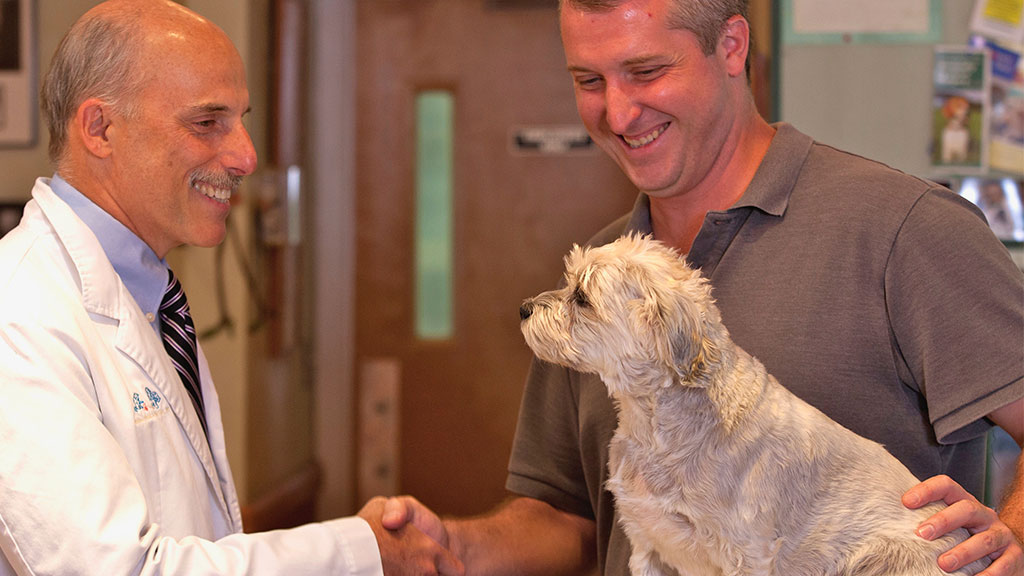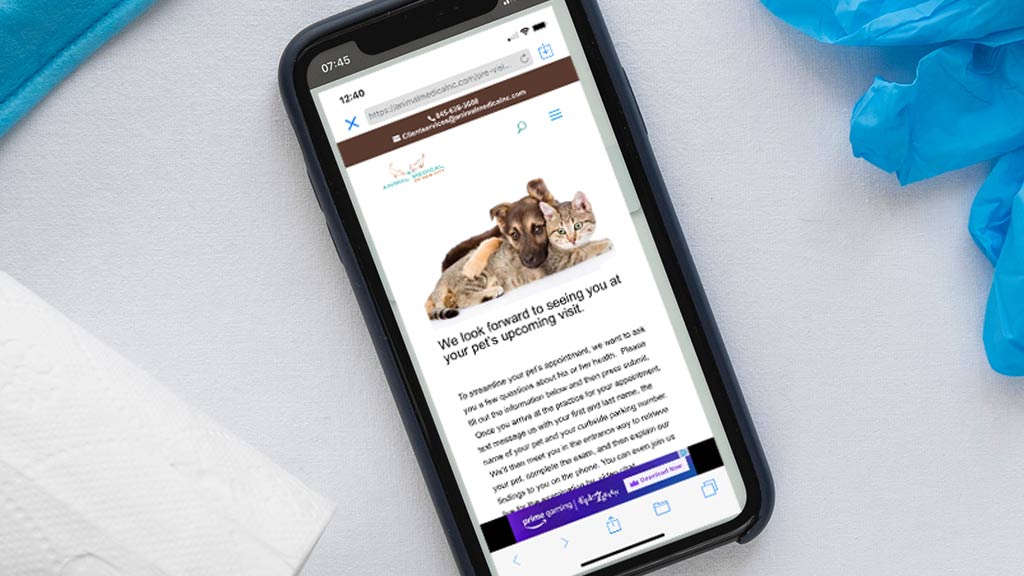Most techs and doctors know how to best approach a patient. The seasoned pros also know how to approach a client. Here are the top 8 ways to make your next client exchange purrfect.
Prepare
Many team members greet clients face-to-face, then dash to the computer to learn more about the patient, the client, or both. It’s not the best way to say, ‘I care’.
In the veterinary hospital, computers are not computing anything; they’re just warehousing information, much like a file cabinet. Thinking of a computer as a file cabinet may help you to keep your head out of it when interacting with a client, advice that would be welcome at any juncture of our cycle of service where you are trying to telegraph, ‘I’m listening and you matter’.
Stick your head into the computer before you enter a room to learn about the case; stick it back in after you leave the room and have to add to the patient file, but while you are in the room, keep your head in the game: take time to listen, learn, and enjoy the experience of meeting someone new.
Make an Acquaintance
There are many reasons why some choose to look more like veterinary doctors than like veterinary friends. I’ve heard the reasoning and to some extent it make sense.
But from the sidelines, the reception desk, exam room, and every other part of the hospital feel like warmer places to be when professionals choose to act like people, not providers. The white coat, the clinical way of speaking (“And are we eating and drinking normally? What about our stools?”), and gluing yourself to the side of that computer are more like a wall than a welcome mat.
Take one minute and get to know the individual. When appropriate, let yourself laugh. For the time being we are still delivering veterinary care live and in person, so be alive, live, and allow yourself to make a friend.
Say something specific about the patient’s breed or species
Every pet owner loves to see their pet fussed over. Ratchet things up a notch by individualizing that fuss. Particularly familiar with long haired cats? Say so. Maybe mention that you have an understanding of how much they shed. Ever own an Irish Setter? Ask how the client assists his with burning off all that excess energy. Is it an African Grey Parrot? Ask if she is talking yet and find out her favorite phrases. Individualizing the patient’s experience and the recommendations you make, demonstrates that you are paying attention and are worth trusting.
But a word of caution, don’t ask the client a question and then turn away to refocus on the pet. If you ask a question, listen for the answer, then you can return to patting the dog’s head. Also skip the baby talk. Too often veterinary professionals squeal or baby talk to pets (and even people). In addition to sounding insincere, it sounds like you’re the one that needs caring for. Talking and interacting in your normal voice and register signals that you are grounded and capable.
Underline that you care how the patient feels
Most pet owners worry that their dog or cat will be afraid during the exam. Let clients know that you share the same concern; that you have experience making exams less scary for pets and that you have prepared to make this one less frightening. Show your client the things you have in place to help matters (treats, pheromones, hiding places, etc.). Ask for the owner’s insight into what the pet may find comforting.
Mean it when you ask how the client is doing.
At the start of the exam, stop everything else you are doing, make eye contact, inquire how the client is doing, then listen to the response. Read the client’s body language, look for signs that the client may have something else on his or her mind and ask additional questions as needed. When responding to the client, maintain eye contact and be sincere. As basic as all of this sounds, we’re often so busy that introductions sound more like social pleasantries rather than genuine attempts to meet and get-to-know. Worse, if clients are upset, a cursory introduction is a turnoff. This pet owner and pet need help and they’re willing to pay for it. Showing up with a vapid smile and ‘how-do-you-do’ is not respectful of where the client is emotionally and what they need from you as a medical professional.
Ask about their experience getting to your office
Asking questions, learning, and listening about a client’s experience coming to your practice is a great way to allow clients to blow off any extraneous frustrations or anxieties. Many clients have trouble getting cats into carriers or see their pet start to panic when they pull into the parking lot. This can be an opportunity to share your own experience or to discuss tricks (or prescriptions!) that may improve things in the future.
Ask about wait time
Like the former question, asking about wait time demonstrates that your are thinking about the client and patient’s wellbeing, not just inside this room, but throughout their experience with your business. Use this exchange to explain how hard your practice works at things like wait time, seeing emergencies on demand, addressing all of a client’s concerns in one visit, getting your team members the breaks they need, and so forth. It can be a passive way of showing that you are a conscientious business owner with character and principals.
Empathize
As a consumer and a pet owner, you know what it is like to wait too long, pay an expensive bill, or try to transport a pet. You’ve cleaned cat vomit off of a car rug before. You’ve had a dog that lost control all over an expensive rug. It’s okay to break the wall of professionalism and talk to the client person-to -person, parent-to-parent, or pet owner-to-pet owner. It’s a more enjoyable way to work through your day and it’s a better way to make friends.
Conclusion
Making a connection to clients is one of the most satisfying and important parts of our job. It doesn’t require so much time as it does focus and intent. When you meet a client and patient, stop multitasking, focus, and take a moment to learn more about the two individuals in front of you. A connection can be made in 30 seconds and then fostered throughout the rest of your time with the client. This brief moment that you take to be present and find out about someone new will improve client loyalty, retention, and the amount of joy you exact from your work.

An In-person Lunch and Learn For Your Team?










